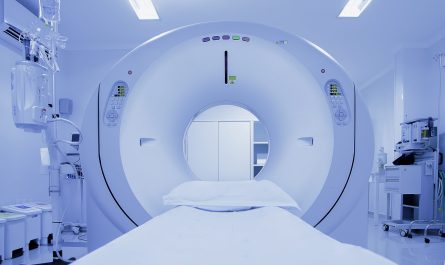What is Spinal Muscular Atrophy?
Spinal Muscular Atrophy: An Overview
Spinal muscular atrophy (SMA) is a genetic disease that affects the nerve cells in the spinal cord that control muscle movement. These nerve cells, called motor neurons, reach out from the spinal cord to voluntarily controlled muscles throughout the body. SMA causes weakness and wasting away (atrophy) of muscles due to the loss of motor neurons. The severity and progression of SMA depends on the type of SMA and the age of onset.
Causes of SMA
Spinal Muscular Atrophy is caused by a defective survival motor neuron 1 (SMN1) gene. This gene provides instructions for making a protein that is critical to the function and survival of motor neurons. Almost everyone has a backup gene called SMN2, but it does not produce enough of the SMN protein for motor neurons to function properly. SMA results when both copies of the SMN1 gene are missing or defective, reducing the levels of functional SMN protein. This lack of SMN protein causes the weakness and muscle wasting associated with SMA.
Spinal Muscular Atrophy is inherited in an autosomal recessive manner. This means a person must inherit one defective SMN1 gene from each parent in order to develop the condition. If a person inherits one defective and one normal gene, he or she will be a carrier but usually will not develop SMA symptoms.
Types of SMA
There are four primary types of SMA which are classified based on the age of onset and highest physical milestone achieved:
– Type 1 SMA (Werdnig-Hoffmann disease): Onset within first 6 months of life, never able to sit unassisted. Considered the most severe and earliest onset type.
– Type 2 SMA (Intermediate SMA): Onset between 6-18 months, able to sit but not stand or walk without assistance.
– Type 3 SMA (Kugelberg-Welander disease or Juvenile SMA): Onset after 18 months, able to stand and walk but may lose this ability over time.
– Type 4 SMA: A mild adult form with onset after 20 years old. Individuals typically maintain the ability to walk but may experience weakness in the legs with age.
Symptoms of SMA
The main symptoms of SMA include progressive muscle weakness and wasting affecting arms, legs, neck and back. Specific symptoms will vary depending on the type of SMA but may include:
– Difficulty holding up head
– Poor muscle tone
– Fatigue from activity
– Loss of motor skills such as rolling over, sitting up, crawling or walking
– Scoliosis (curvature of the spine)
– Difficulty breathing or swallowing (in more severe cases)
Diagnosis of SMA
SMA is diagnosed through a combination of tests including:
– Genetic testing: A DNA test identifies any mutations in the SMN1 and SMN2 genes.
– Electromyography (EMG): Analyzes electrical activity in muscles to evaluate nerve function.
– Nerve conduction studies: Evaluates speeds of nervous system signals and controls.
– Clinical examination: Assesses muscle tone, strength, reflexes and motor skills.
Treatment and Management of SMA
Currently there is no cure for SMA, however treatments can help manage symptoms and potentially delay disease progression. Treatment aims to maximize motor abilities through:
– Medications: Nusinersen (Spinraza) and onasemnogene abeparvovec-xioi (Zolgensma) are gene replacement therapies approved for SMA that help increase SMN protein levels. Other drugs may help with muscle function or breathing issues.
– Physical/occupational therapy: Exercises can help stretch and strengthen muscles and improve mobility, posture control, breathing and more. Braces and adaptive equipment assist movement.
– Nutritional support: High-calorie foods and feeding strategies help avoid malnutrition, which worsens symptoms.
– Pulmonary care: Breathing techniques, cough assist devices, and possibly mechanical ventilation in severe cases aid lung function.
– Spinal surgery: May help in older individuals with scoliosis to relieve pain and aid functionality.
– Palliative care: Supports quality of life by managing pain, fatigue and other symptoms to maximize function and independence.
Prognosis of SMA
The prognosis of SMA depends on the type. Many individuals with later onset types live well into adulthood. However, those with the most severe Type 1 SMA have the poorest prognosis with an average life expectancy of 2 years without treatment. Recent treatments have shown promising results in improving survival rates and motor function even in Type 1 patients when started early. With supportive care, many individuals can maintain good quality of life for years. However, SMA has no cure at this time.




